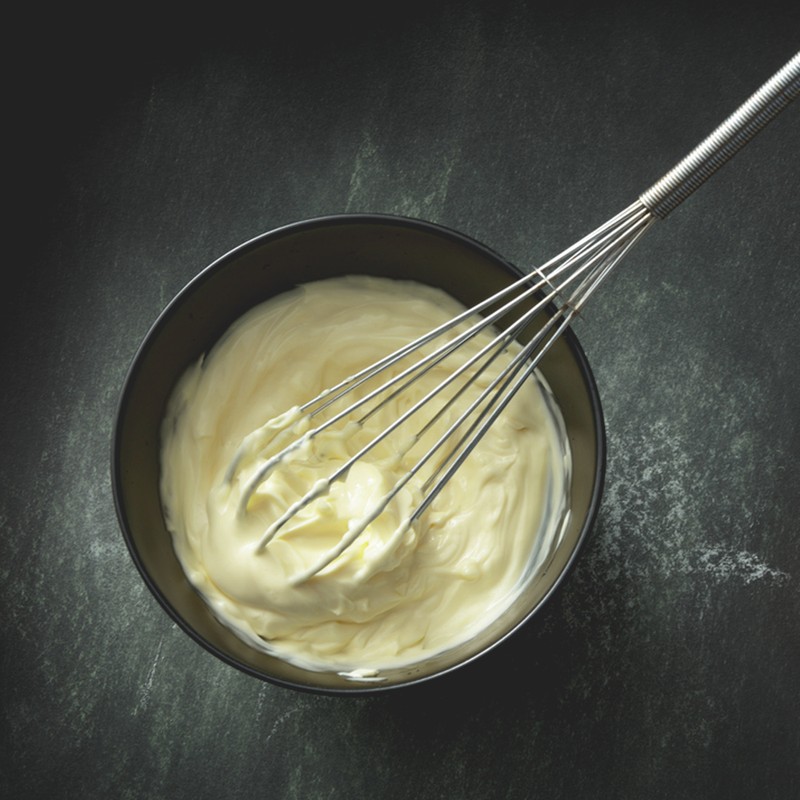How To (& Why You Should) Make Your Own Mayo
Stage One
All ingredients need to start at room temperature (I don’t refrigerate my eggs) – the jury’s out if you should, but as ours are kindly donated from the hens in the garden, we trust them implicitly. Break one egg into a tall vessel, one which the electric blender stick can slot into so the mayo won’t splatter out of. The reason to use the whole egg and not just the yolk is it emulsifies well, giving a lighter texture.
A Foolproof Technique
To whisk or blend? That is the question. Traditionally you’d whisk of course, but you can use an electric hand blender for speed. Let’s face it, few want to laboriously beat for ten minutes.
I initially blitz a little mustard and a quarter of a clove of garlic with the egg. Now the mix is ready to receive the oil.The trick is to add the oil painfully slowly, drip by drip, whizzing all the time (don’t stop for a second and keep the stick still!). It will begin to emulsify. Then you can commence with a steady drizzle - never a slosh.
Choosing Your Oil
Regarding your oil choice, all flavours become exaggerated in mayo so extra virgin olive oil can make the end result grassy and bitter: I’d suggest 75% insipid veg or sunflower oil and 25% olive oil.
Towards the end of the process, retain a steady stream of oil. Once it thickens and pushes up around the edges you can finally move the blender up and down a little. To finish, add a squeeze of lemon and a pinch of salt. Taste. Serve.
What To Do If It Splits
Curdling normally happens from moving the blender around too much or continuing when it’s reached its peak. Don’t be dispirited, it’s straightforward to rectify. Try squeezing in lemon juice if ribbons appear, this sometimes brings it back. If that doesn’t work, save the mix and reboot the process. Crack a new egg into a clean dry vessel and extremely slowly, as you did with the oil, trickle in the unsuccessful mix, buzzing calmly and continuously until it thickens and emulsifies.
DISCLAIMER: We endeavour to always credit the correct original source of every image we use. If you think a credit may be incorrect, please contact us at [email protected].


